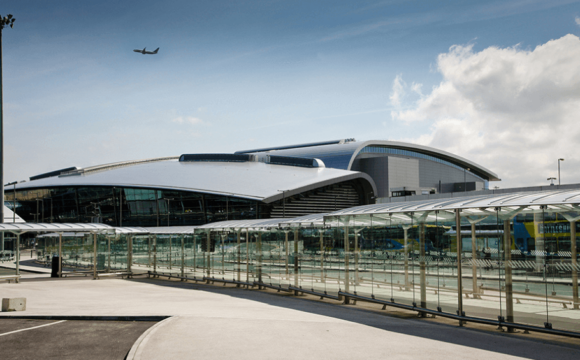The southeast corner of this state is particularly suited to the art of gardening, given its temperate clime and its citizens’ multi-generational talents with agribusiness.
From around the world, garden gurus flock to the Countryside of Philadelphia year-round, drawn by the convenience of easy air access. Europeans in particular enjoy wandering local open expanses, perhaps noting the similarities to their greenery back home while concurrently exploring the differences that make these spaces uniquely American.
Regardless of the reason, two areas — Chester County and Montgomery County — have emerged as standout destinations, boasting the largest concentration of public gardens and arboreta in North America. Each year, thousands of worldwide visitors make the trip to breathe the scent of wildflowers, marvel at sculpted topiaries, enjoy a bracing winter walk and gaze at fireworks of floral colour.
The Brandywine Valley, Chester County, Pennsylvania
The Brandywine Valley has a rich tradition of horticulture from the benevolence of the family of Henry Francis du Pont (1880–1969) to arboretums paying homage to Pennsylvania — originally called Penn’s Woods. This heritage resonates throughout the greater Philadelphia region, earning the moniker – America’s Garden Capital. The horticultural influence of the famed du Pont family is particularly strong in southeastern Pennsylvania and northern Delaware.
The Brandywine Valley is home to Longwood Gardens, the world’s premier horticultural display garden, founded by Pierre S du Pont. Situated on 1,050 acres, Longwood features 20 indoor gardens as well as 20 outdoor gardens, a breathtaking conservatory and illuminated fountains and fireworks. Built in 1919, the conservatory is one of the world’s great greenhouse structures, home to 20 different gardens featuring 5,500 types of plants. Visitors will be inspired by the Idea Garden, breathe in the fragrances of the Rose Garden, delight in the sights and sounds of the Chime Tower and waterfalls, take a forest walk and so much more. New in 2014 is the expanded 86-acre Meadow Garden with colourful, native wildflowers and meandering walking trails.
Experience Winterthur Museum and Country Estate. Once a du Pont home, Winterthur’s 1,000-acre country estate encompasses rolling hills, streams, meadows, and forests. Henry Francis du Pont developed an appreciation of nature as a boy that served as the basis for his life’s work in the garden. He selected the choicest plants from around the world to enhance the natural setting, arranging them in lyrical color combinations and carefully orchestrating a succession of bloom from late January to November. Du Pont translated his love of the land into a unified work of art that embodies a romantic vision of nature’s beauty. Fittingly this estate, close to American royalty, hosts the exhibition “Costumes of Downton Abbey” through 2014.
Tranquil, stately arboretums round out the horticultural experience in the Brandywine Valley. Jenkins Arboretum and Garden is one of Pennsylvania’s major horticultural and environmental assets. It preserves and nurtures 46 acres of natural environment; showcasing native trees, shrubs, rhododendrons, azaleas, laurels, ferns, and wildflowers.
The Brandywine River itself serves as a horticultural canvas on the grounds of renowned Brandywine River Museum of Art, a showplace of nature as well as artistic treasures. Native plants and wildflowers populate the landscape around this historic gristmill, while the museum houses works from American landscape artists and three generations of the Wyeth family artists.
Valley Forge, Montgomery County, Pennsylvania
To the north of Brandywine is Valley Forge, an area known for its historical significance. The 3,500 acres of Valley Forge National Historical Park are a wonder to behold as they change from the monochrome of black and white in winter to a springtime artist’s palette of greens, purples, yellows, reds and blues. As April gives way to early May, the dogwoods come into full bloom, dotting the hillsides with confetti blossoms of pink and white. Mountain laurels paint the wooded slopes of Valley Forge with flowers an ever-changing kaleidoscope.
Morris Arboretum of the University of Pennsylvania is a legacy of the Victorian era. Brother and sister John and Lydia T Morris purchased the estate in 1887 and organised the 92-acre expanse into intimate gardens and broad vistas. Visitors discover rose gardens; a swan pond; a rustic log cabin nestled in the woods; an outdoor sculpture garden; and an Italian grotto with a secret passageway. A Victorian fernery, the last of its kind in this country, is nestled peacefully in a curve of land below the Rose Garden, while its filigree roof sparkles in sunlight.
The garden at historic Peter Wentz Farmstead is both beautiful and utilitarian: Its close proximity to the kitchen is no accident. The plot overflows with a cornucopia of herbs and vegetables grown from heritage seeds: kohlrabi, oak leaf chard, Catawissa onions and Munchen bier radishes. The taste buds of the Colonial Wentz family would routinely be tantalized by fresh horehound and peppermint, providing a dash of zest to the daily menu. Gooseberries and currants were made into wine. Bright marigolds still keep a colourful watch over all.
The Middle English meaning of the word chanticleer is rooster, and the Chanticleer Estate and Gardens are clearly something to crow about. The original home was built in the early part of the 20th century as a country retreat, and much of that idyllic charm has been retained architecturally and botanically. The pathways of the estate offer unique experiences as they wind by Bell’s Run Creek, the orchard and the bulb meadow. For fans of daffy daffodils, this is the place to be: 80,000 of the cheery flowers pop their yellow and white heads above the lawn each spring. Other must-sees include a ruin garden, pond garden and Asian woods. Bridges, benches, paths and unique stone furniture accentuate the natural landscape to make this “pleasure garden” an unforgettable experience. Tours of the historic home take place Fri/Sat at 11 a.m.
Surrounded by castle-style crenellated walls, the impressive formal gardens at the elegant late-Georgian style Highlands Mansion and Gardens are a recent addition. The original home dates back to 1796, and the two acres of gardens highlight the magic that can happen when architecture and horticulture are cross-pollinated with an artistic flair.
Although sculpted foliage is impressive in its artistry, there is something to be said for the ability to view the great outdoors as Mother Nature herself designed it. The Valley Forge area is crisscrossed with nearly 60 miles of trails. Athletes who enjoy testing their mettle while churning a pedal, join the cyclists who zip along the Schuylkill River Trail, marvelling at the views of a vital and historic waterway. Visitors desiring a slower pace enjoy leisurely walks on the Perkiomen Trail, which, in fall, lies beneath a breathtaking canopy of autumnal colour.
A Relaxing Invitation
The US has a reputation abroad for a fast-paced, go-go lifestyle with little room for respite or reflection. It’s not wholly true, as Americans do enjoy a breather now and then. European tourists are invited to come and relax in the Countryside of Philadelphia, featuring the gardens of Chester County and Montgomery County. Visitors who happen to go home with a blade or two of grass stuck between their toes, remnants of a barefoot summer romp, enjoy a special kind of souvenir.
















